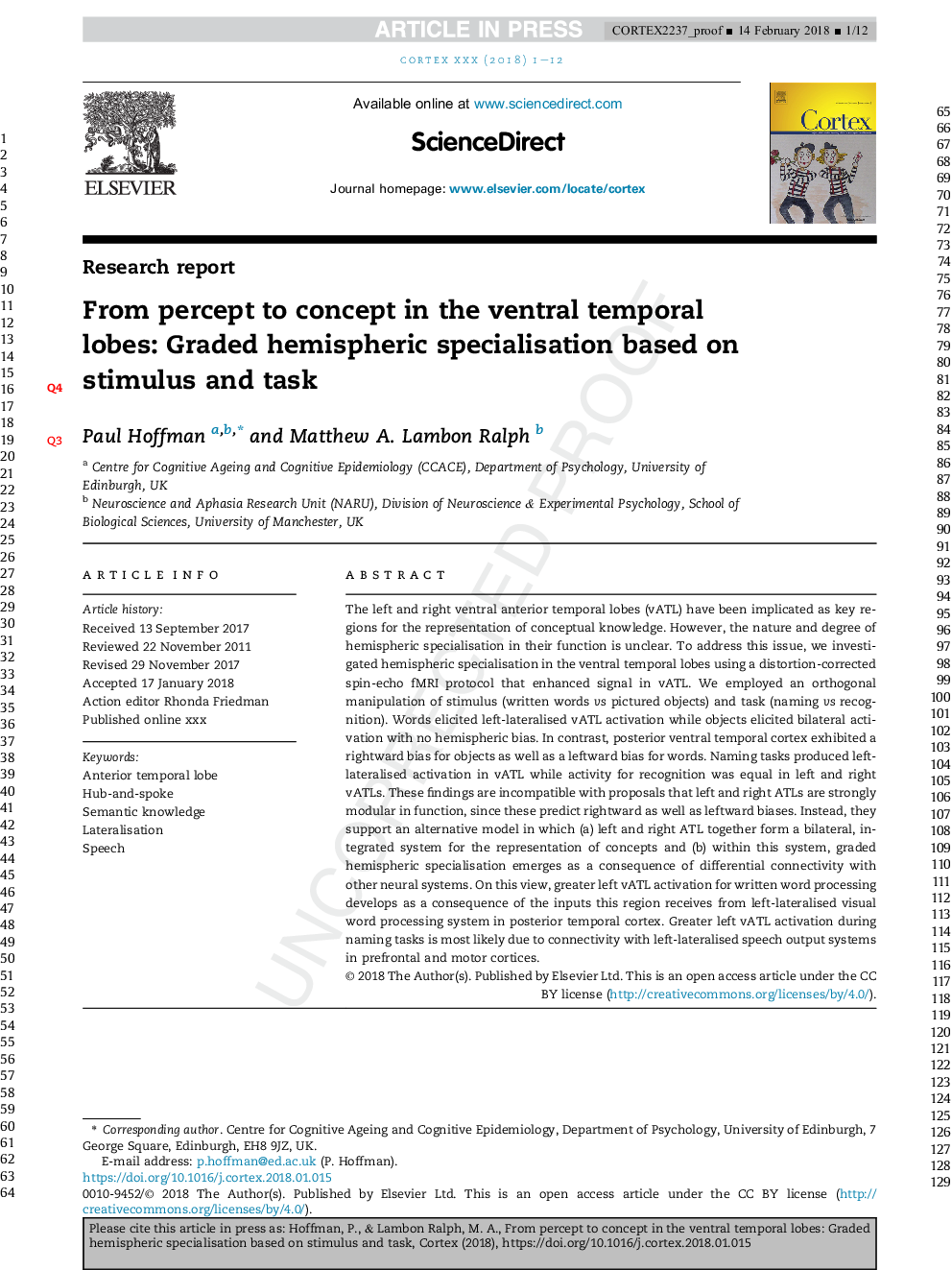| Article ID | Journal | Published Year | Pages | File Type |
|---|---|---|---|---|
| 7311775 | Cortex | 2018 | 12 Pages |
Abstract
The left and right ventral anterior temporal lobes (vATL) have been implicated as key regions for the representation of conceptual knowledge. However, the nature and degree of hemispheric specialisation in their function is unclear. To address this issue, we investigated hemispheric specialisation in the ventral temporal lobes using a distortion-corrected spin-echo fMRI protocol that enhanced signal in vATL. We employed an orthogonal manipulation of stimulus (written words vs pictured objects) and task (naming vs recognition). Words elicited left-lateralised vATL activation while objects elicited bilateral activation with no hemispheric bias. In contrast, posterior ventral temporal cortex exhibited a rightward bias for objects as well as a leftward bias for words. Naming tasks produced left-lateralised activation in vATL while activity for recognition was equal in left and right vATLs. These findings are incompatible with proposals that left and right ATLs are strongly modular in function, since these predict rightward as well as leftward biases. Instead, they support an alternative model in which (a) left and right ATL together form a bilateral, integrated system for the representation of concepts and (b) within this system, graded hemispheric specialisation emerges as a consequence of differential connectivity with other neural systems. On this view, greater left vATL activation for written word processing develops as a consequence of the inputs this region receives from left-lateralised visual word processing system in posterior temporal cortex. Greater left vATL activation during naming tasks is most likely due to connectivity with left-lateralised speech output systems in prefrontal and motor cortices.
Related Topics
Life Sciences
Neuroscience
Behavioral Neuroscience
Authors
Paul Hoffman, Matthew A. Lambon Ralph,
